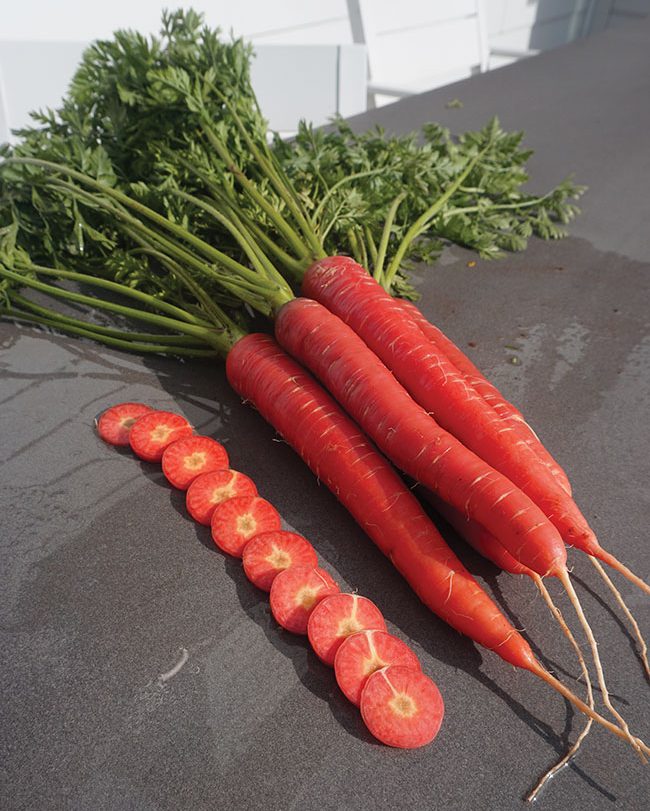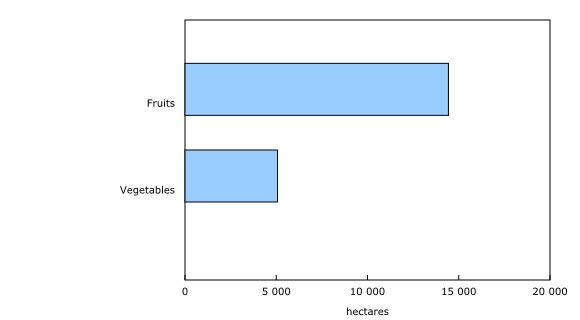
Features
Organic production
StatsCan releases data on organic fruit and veg production
July 27, 2021 By Statistics Canada
 Photo courtesy of William Dam Seeds.
Photo courtesy of William Dam Seeds. In 2020, certified organic fruit and vegetable farmers grew and sold more produce despite adverse weather conditions and labour shortages amid the pandemic. Certified organic production accounted for 6.4 per cent of the total fruit and vegetables sold nationally in 2020.
Certified organic fruit and vegetable cultivated area increased 8.2 per cent to 19,506 hectares in 2020. However, adverse weather conditions for some fruit farmers contributed to a 4.3 per cent decrease (to $161.5 million) in the farm-gate value of certified organic fruits and vegetables. Canadian organic farmers also faced labour shortages and marketing challenges in 2020 as a result of the pandemic.
Fruit production: Certified organic cranberry sales fall by over a quarter
Total certified organic fruit cultivated area in Canada rose 8.4 per cent from 2019 to 14,435 hectares in 2020. Fruit-bearing area was up 9.8 per cent to 8,995 hectares.
Quebec accounted for the largest share of cultivated area (83.7 per cent), followed by British Columbia (9.3 per cent) and Ontario (5.6 per cent). Wild blueberries (78.6 per cent) and cranberries (16.3 per cent) accounted for almost all the certified organic cultivated area in Quebec.
The farm-gate value of certified organic fruit fell 7.7 per cent to $100 million, partially attributable to a 27.4 per cent drop in certified organic cranberry farm-gate value to $35.7 million.
Conversely, the farm-gate value increased for certified organic apples (+19.7 per cent to $21.9 million), certified organic wild blueberries (+16.6 per cent to $13.2 million) and certified organic strawberries (+12.9 per cent to $2.2 million). As mentioned in the February release, wild blueberry and apple production rose in 2020.
Domestic organic fruit production accounts for small share of organic fruit supplies
Canada generally imports far more certified organic fresh fruit than is grown and sold domestically. For example, 237,000 kilograms (kg) of certified organic strawberries were grown and sold domestically, while 7.5 million kg were imported in 2020, with the vast majority coming from the United States (83.5 per cent) and Mexico (16.5 per cent).
Imports also largely exceeded domestic production for certified organic grapes (9.4 million kg versus 2.6 million kg) and pears (2.8 million kg versus 621,000 kg). For nine different fruits, imports worth $201 million in 2020 were two times greater than domestic certified organic fruit farm-gate values. Most imported certified organic common fruit comes from the United States.
Canadian farmers are growing more certified organic vegetables
Total certified organic vegetable cultivated area in Canada (excluding potatoes, greenhouse vegetables and seeds) rose 7.7 per cent to 5,071 hectares. Quebec accounted for four-fifths (80.3 per cent) of the total certified organic vegetable cultivated area, followed by Ontario (8.3 per cent) and British Columbia (7.5 per cent). In 2020, certified organic vegetable cultivated area represented 5.1 per cent of the entire field vegetable area.
Green peas (1,236 hectares) accounted for the largest total certified organic vegetable cultivated area, followed by sweet corn (868 hectares), beans (534 hectares), broccoli (262 hectares), cauliflower (255 hectares) and carrots (248 hectares).
Organic farm-gate receipts rose 1.8 per cent to $61.3 million, accounting for 4.6 per cent of the total field vegetable farm-gate value in 2020. Over half of the total certified organic vegetables grown domestically were produced in Quebec ($34.8 million) in 2020, while less than one-third were grown in British Columbia ($12.5 million) and Ontario ($6.6 million).
Carrots are Canada’s leading certified organic vegetable import
In 2020, 86.6 per cent of the certified organic baby carrots, regular carrots, watermelon, onions and broccoli imported to Canada were grown in the United States. Baby carrots (10.8 million kg) topped certified organic vegetable imports, followed by regular carrots (9.9 million kg), onions (9.7 million kg) and broccoli (2.3 million kg).
Recent drought conditions in California – a leading vegetable-growing state – may affect the future supply and prices of certified organic vegetables in Canada.
Note to readers
These estimates should be used with caution. The organic farm database, which was used to identify which farms in the Fruits and Vegetables Survey are organic, is not complete. Therefore, there may be under-coverage in the estimates. The use of administrative data to improve the quality of the estimates has been limited to Quebec and British Columbia.
The estimates of cultivated area and production for certified organic fruits and vegetables were derived from the Fruits and Vegetables Survey. The Fruits and Vegetables Survey tracks the total cultivated area, harvested area, total production, marketed production and farm-gate value of selected fruits and vegetables grown in Canada, including certified organic and conventional farms. Our regular release for the entire estimates was published on February 10, 2021.
Print this page
